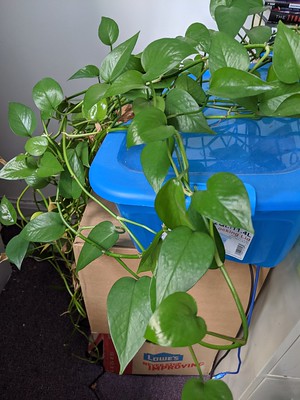Houseplants can add an extra bit of decoration to your home. They are known for sprucing up corners, adding colour and breaking up that empty wall space in the living room or family room. Houseplants also act as natural air purifiers because they absorb harmful chemicals like formaldehyde from paint, cleaning products and other common household items.
One easy-to-care-for plant is the philodendron houseplant. This green plant is native to parts of South America and Africa but can be easily cared for indoors in most homes. There are many different varieties of philodendrons; some have large leaves while others have small leaflets making them perfect for any home décor plan. When caring for a philodendron plant, remember to provide it with proper light, water and temperature. Read on for helpful tips on how to care for a philodendron houseplant. Philodendron Houseplants: How To Care And Grow Philodendron Plant.
Table of Contents
Philodendron Houseplants Types
Philodendrons are small trees that can grow up to six feet tall in their natural environment but stay relatively small in the home when grown indoors.
There are two main types of philodendrons:
- climbing and
- non-climbing
How To Grow Philodendron Houseplants?
If you want both types, make sure you purchase them at the same time so they can easily be grown together in one pot or garden bed.
Most indoor varieties do not climb like their outdoor counterparts, however there is one variety called “Monkey Tail.” This variety has vines that will attach themselves to your home and can be easily trained to grow up a pole in your garden.
A weekly application of fertilizer will help to keep your philodendron growing at a rapid rate. Use an all-purpose plant food and apply it once every two weeks to the soil with your water source.
How To Take Care Of A Philodendron Houseplants?
- Light Requirements: This houseplant needs bright light, but not direct sunlight. Most philodendrons prefer indirect or filtered light for between eight and 10 hours per day.
- Place your plant near a window so the leaves get natural lighting throughout the day.
- If you don’t have an area with ample natural lighting, you can also use artificial lighting such as florescent lights or LED lights designed for plants.
- Place these inside of reflective material so they can direct excess energy towards the philodendron’s leaves.
- Water Requirements: Philodendrons are easy-to-care-for plants because they are hardy indoors and require little water maintenance once properly grown.
- They are classified as a semi-moisture plants because they need regular watering but cannot be kept constantly wet.
- When caring for your philodendron, make sure the soil is moist to the touch and never soggy.
- The best way to water your philodendron houseplant is through the use of 1/2 cup measuring cup or other small utensil that can be filled with water and poured into the soil at its base.
- Let the plant sit in 1 inch of standing water before allowing it to drain completely.
- This process should be repeated until all excess moisture has been removed from the potting soil, which may take up to 20 minutes.

- Temperature Requirements: Philodendrons thrive in temperatures between 16°C (60°F) and 27°C (80°F). They prefer warmer temperatures but cannot survive freezing.
- If you keep your house too cold, place the philodendron on a sunny window sill or next to another warm room where it will get more sunlight.
- If you live in milder climates, you can move your potted philodendron outdoors during summer months for additional light and warmth.
- Just remember that they are tropical plants so they need protection from prolonged exposure to cold weather conditions when grown outside of their native environment.
- Pruning Requirements: If you want your philodendron to stay small, prune the vines once they become too long for your home.
- Pruning will also help increase air circulation around the plant so it can grow stronger and healthier.
- Using sharp, sterile scissors makes it easy to prune these plants without damaging them or spreading any diseases that may be present in the leaves or roots.
- When plants are stressed, they are more susceptible to leaf spots and fungal infections so make sure to properly care for your philodendrons by keeping them healthy and free of pests.

How to grow Acoma Crape Myrtle: Benefits, Uses, Care & gardening tips
Is My Plant a Pothos or a Philodendron?
When trying to learn how to identify a philodendron or pothos houseplant, it’s important to understand that both of these plants are scientifically classified as “Epipremnum aureum.”
You’ll often hear them referred to by their common names, which can make it hard for some people to distinguish between the two. However, if you know what to look for in terms of plant size and leaf shape, you should have no problem identifying either one correctly.
In Conclusion
By following these simple tips on how to care for a philodendron houseplant, you’ll end up with a lush green plant that’s perfect for your home or office. The philodendron is a beautiful, easy-to-grow plant that requires very little maintenance to thrive indoors.
As long as you water it once per week and allow proper air circulation around its leaves, this houseplant should grow at a stable rate with minimal input from the owner.
Caring For Marigolds In Pots: Tips on growing, seed, cuttings, layering & more